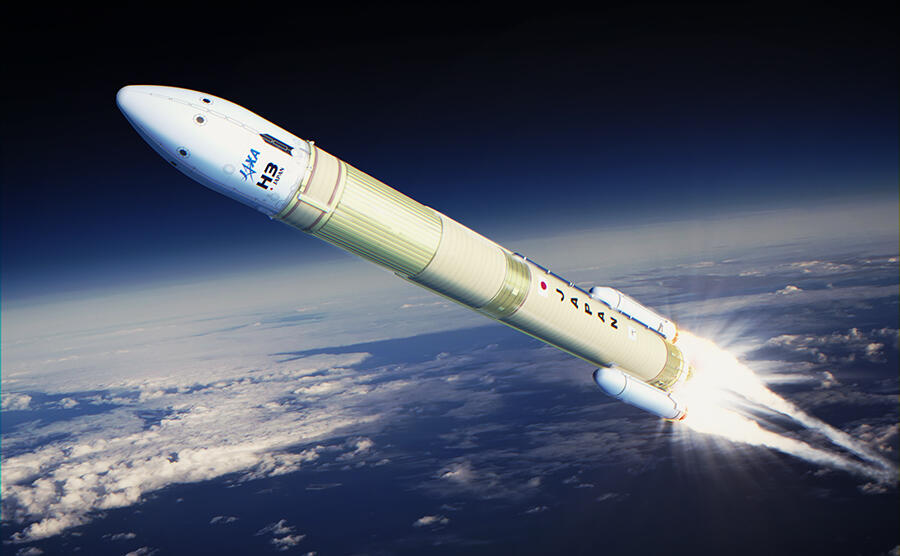At just past noon on Monday, the Japan Aerospace Exploration Agency (JAXA) successfully launched its third H3 rocket from the Tanegashima Space Center in Kagoshima Prefecture. The new flagship H3 rocket, carrying a 3-ton Earth observation satellite, released its payload about 16 minutes after taking off. Developed by JAXA and Mitsubishi Electric, the Daichi-4 satellite, also known as the Advanced Land Observing Satellite-4 (ALOS-4), boasts a 200-kilometer observation range. It can detect ground deformation, landslides and the impacts of natural disasters. It’s also capable of monitoring military activity, such as missile launches.
Officials at the launch control center in Tanegashima embraced following the launch, which had been scheduled for Sunday. Adverse weather meant it had to be put back a day. On its maiden flight, in March last year, the H3 rocket dropped into the Philippine Sea. It was forced to self-destruct just a few minutes after taking off because its second stage engine failed to ignite. In February of this year, the H3 rocket was launched for a second time, making its first successful flight. However, that one was carrying a dummy satellite.
The H3 Rocket: A Cheaper Alternative to Falcon 9
JAXA intends to launch its single-use rockets six times a year. The H3 is a successor to the H2A, which is due to be retired after two more flights. According to its website, JAXA’s goal is “to provide ‘easy-to-use rockets’ that offer flexibility, high reliability, and great cost performance, developed by always remaining mindful of the users’ perspectives.” The H3 rocket is seen as a cheaper alternative to Falcon 9, the reusable, two-stage rocket designed and manufactured by Elon Musk’s company SpaceX, which is currently dominating the market.








